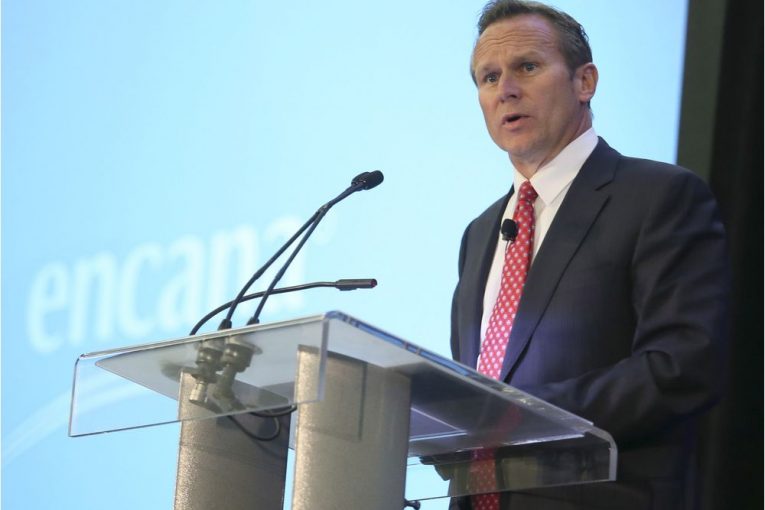
The importance of oilsands development — and getting the product to market — has dominated conversation in Alberta since 2005, within both the business world and government.
The genie escaped the bottle when oil prices nudged past US$60 in May of that year, which suddenly put the oilsands in a position to make money. Real money.
It was the horse to bet on. One that would create jobs, produce huge tax revenues and leapfrog the country onto the global energy stage. And it did.
The focus has remained on the oilsands and its importance in terms of potential, environmental impact, transportation infrastructure and competitiveness in a persistently low-price environment.
But while the oilsands has sucked the oxygen out of the room, it’s not the only game in town.
A group of companies, led by Encana and including Tourmaline, Advantage Oil & Gas, Whitecap Resources and a number of others, are working to tell the story of another important segment of Canada’s energy potential — liquids rich natural gas and light tight oil. And they’ve plugged into a Natural Resources Canada initiative to engage a younger demographic.
The cross-country Generation Energy campaign landed at Encana’s downtown Calgary offices Friday, with 70 participants drawn from the energy sector, First Nations communities, non-governmental environmental organizations, governments and academia. Participants heard about everything from global energy trends and the potential of light hydrocarbons, to government’s role in supporting energy development and where academia fits into the mix.
Encana CEO Doug Suttles said it’s important Canadians understand the opportunities presented by liquids rich natural gas and light tight oil is both significant and competitive.
“We are a Canadian company that invests in the best shale plays across North America and we are actually in the Permian (basin),” he said in an interview. “We are the second largest producer in the Midland Basin today and yet we still choose to invest in the Montney. We don’t have to invest in the Montney, we choose to invest in the Montney because it’s competitive.”
Advances in technology, already helping to bring down the costs and environmental footprint of the oilsands, have also unlocked the potential of light tight oil and liquids rich natural gas reserves in the Montney, Duvernay, Horn River and Deep Basin formations of Alberta and British Columbia.
The draw for developing the liquids rich natural gas, which produces light oil and condensate alongside the natural gas, is both compelling and competitive.
The natural gas condensate that is produced alongside the gas helps to offset the economics of being far from markets — and helps make the numbers work. The Encana-led group has calculated the potential well inventory at more than 30,000.
Richard Dunn, vice-president of government relations at Encana, said 2,000 to 3,000 wells could be drilled yearly, which would translate to an annual investment of $7 billion to $10 billion.
That investment, it’s estimated, could produce 500,000 barrels a day of light oil and condensate, 500,000 barrels a day of natural gas liquids that could be used as petrochemical inputs and between 3 billion and 4 billion cubic feet of natural gas per day.
Those are big numbers.
Another piece to consider is that these plays don’t require multibillion, multi-decade commitments typical of oilsands investments. The shorter-cycle nature of light tight oil and liquids rich plays fits with the market’s move to find opportunities with shorter investment cycles. It also comes with lower carbon footprints in the extraction process.
That’s a sensitive point because the last thing Canada’s energy sector needs is to appear divided; the oilsands pitted against light tight oil and liquids rich natural gas on the basis of carbon footprints.
Realizing the potential of this resource means middle-class jobs and tax revenues for all levels of government. According to the Canadian Energy Research Institute, those numbers are $170 billion in taxes and royalties over a five-year period and the addition of 100,000 jobs.
And while it seems like a pipe dream right now, the potential natural gas production alone would be big enough to fill two liquefied natural gas plants off the West Coast. It also presents an opportunity for reconciliation with Indigenous peoples, with economic potential coming in the form of equity participation, training and small business opportunities.
The oilsands has been in the driver’s seat, and with good reason. As Suttles pointed out, it was oilsands companies that laid the foundation for giving people jobs where they live and not requiring them to leave their homes for employment.
Now it’s time for the light tight oil and liquids rich natural gas segment to share the energy spotlight.
Standing in the way of development in Canada are the usual issues of distrust around energy development. But, more than anything, the slow pace of policy development and regulatory approvals continue to challenge companies committing capital to develop the country’s energy resources. Companies need certainty on policy.
The decision by TransCanada this week to ask the National Energy Board to suspend its review of the Energy East Pipeline Project, which would carry 1.1 million barrels of oil from Alberta to the East Coast is yet another unfortunate example of this sorry state of affairs on the regulatory front.
Rather than scope creep — what the NEB is doing with regard to Energy East by expanding the review to include upstream emissions — the focus should be on creating efficient and environmentally sustainable policies that contribute to investment, not hinder it.
There is a transition underway within the energy sector. The next generation are the stakeholders of the future — and by engaging them in a conversation about what that future holds, means to facilitate a collaborative voice that gets away from polarization and supports the development of informed energy policy.
It’s a goal that should be embraced by industry, government and all Canadians.
Deborah Yedlin is a Calgary Herald columnist
You can read more of the news on source
